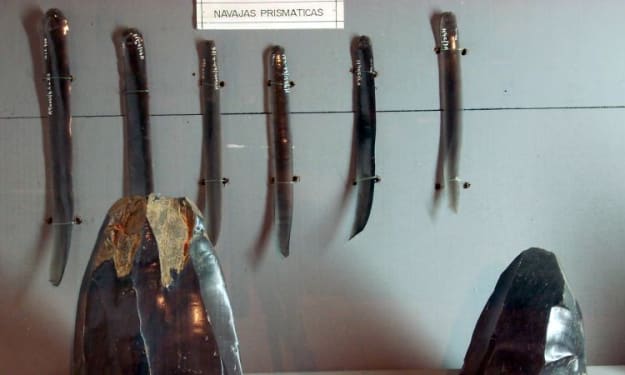HISTORY OF THE TARUMANAGARA KINGDOM
From the Beginning to the Fall of the Kingdom

Java Island, one of the fertile islands in the archipelago, holds various extraordinary stories of civilization. One of the most prominent early chapters in its history was the founding of the Tarumanagara Kingdom, a large kingdom that existed in West Java around the 4th century AD. From its inception until its collapse, Tarumanagara played an important role in the development of civilization on the island of Java.
At one time in the 4th century AD, on the banks of the Tarum River, now known as the Citarum River, stood the Tarumanagara Kingdom. The name of this kingdom comes from the words "Taruma," referring to the river that is the lifeblood of its people, and "Nagara," which means country or kingdom. This kingdom was founded on fertile land, with the hope that it would bring prosperity to its people.
The most famous and influential king of this kingdom was King Purnawarman. Under the reign of King Purnawarman in the 5th century AD, Tarumanagara experienced its heyday. Purnawarman was a wise and visionary king. One of his greatest works was the construction of a sophisticated irrigation system to ensure a stable water supply for agriculture. The Tugu inscription records that King Purnawarman built a water channel 6112 spears long, a major achievement that shows his technological prowess at that time.
Tarumanagara reached the peak of its glory with rapidly developing social and economic life. The irrigation system built by King Purnawarman increased agricultural productivity, which was the backbone of the kingdom's economy. Trade relations with other kingdoms in the archipelago and Southeast Asia further enriched the lives of the Tarumanagara people. This kingdom became the center of power and prosperity in West Java, which is recorded in various Sanskrit inscriptions such as the Ciaruteun Inscription, the Kebon Kopi Inscription, and the Tugu Inscription.
The Tarumanagara Kingdom, which was founded in West Java around the 4th century AD, was led by a number of successive kings. The first king, Rajadirajaguru Jayasingawarman (358-382 AD), founded this kingdom after migrating from India. He was succeeded by his son, Dharmayavarman (382-395 AD), who strengthened the kingdom's position. Purnawarman (395-434 AD), the most famous king, brought Tarumanagara to the peak of its glory through various infrastructure developments. After that, Vishnuwarman (434-455 AD) continued his father's policies, followed by Indrawarman (455-515 AD), Candrawarman (515-535 AD), and Suryawarman (535-561 AD), each of whom maintained the stability and prosperity of the kingdom. During the reigns of Kertawarman (561-628 AD), Sudhawarman (628-639 AD), and Hariwangsawarman (639-640 AD), the kingdom remained strong. Nagajayawarman (640-666 AD) continued the reign before Linggawarman (666-669 AD) became the last king. After Linggawarman's reign, the Tarumanagara Kingdom began to decline, and finally its territory was taken over by successor kingdoms such as the Sunda Kingdom and the Galuh Kingdom.
However, Tarumanagara's glory did not last forever. As time went by, this kingdom began to decline. Internal conflicts and dynastic divisions were the main factors that weakened the central power of the kingdom. Without strong leadership, control over the kingdom's territories weakened.
Apart from that, pressure from neighboring kingdoms also accelerated the collapse of Tarumanagara. The Sunda Kingdom and the Galuh Kingdom began to emerge and develop in the same region, challenging Tarumanagara's power. Invasions and attacks from these kingdoms worsened the situation, making it increasingly difficult for Tarumanagara to defend its territory.
In the end, around the 7th century AD, Tarumanagara's power faded. The territory was divided and taken over by successor kingdoms such as the Kingdom of Sunda and Galuh. The fall of Tarumanagara marked the end of an era, but also paved the way for the development of new kingdoms that brought a new story to the history of Java.
The Tarumanagara Kingdom, with all its glory under the reign of King Purnawarman, has left a deep mark in the history of the archipelago. From its inception until its collapse, Tarumanagara was a silent witness to the changes and dynamics that occurred on the island of Java. Even though it eventually collapsed, its cultural and historical heritage lives on and is an important part of Indonesia's rich history.
After the collapse of the Tarumanagara Kingdom, the island of Java saw the emergence of several large kingdoms that brought new cultural, political and economic developments. The Sunda and Galuh Kingdoms controlled the western region, while the Medang Kingdom and then Kediri developed new centers of power in Central Java and East Java. Each of these kingdoms played an important role in Javanese history and contributed a rich cultural heritage to Indonesia.
About the Creator
AC Pandu
I am Ace, an employee with more than 10 years experience and has worked in several state-owned companies. I like studying history and science.
Enjoyed the story? Support the Creator.
Subscribe for free to receive all their stories in your feed. You could also pledge your support or give them a one-off tip, letting them know you appreciate their work.






Comments
There are no comments for this story
Be the first to respond and start the conversation.